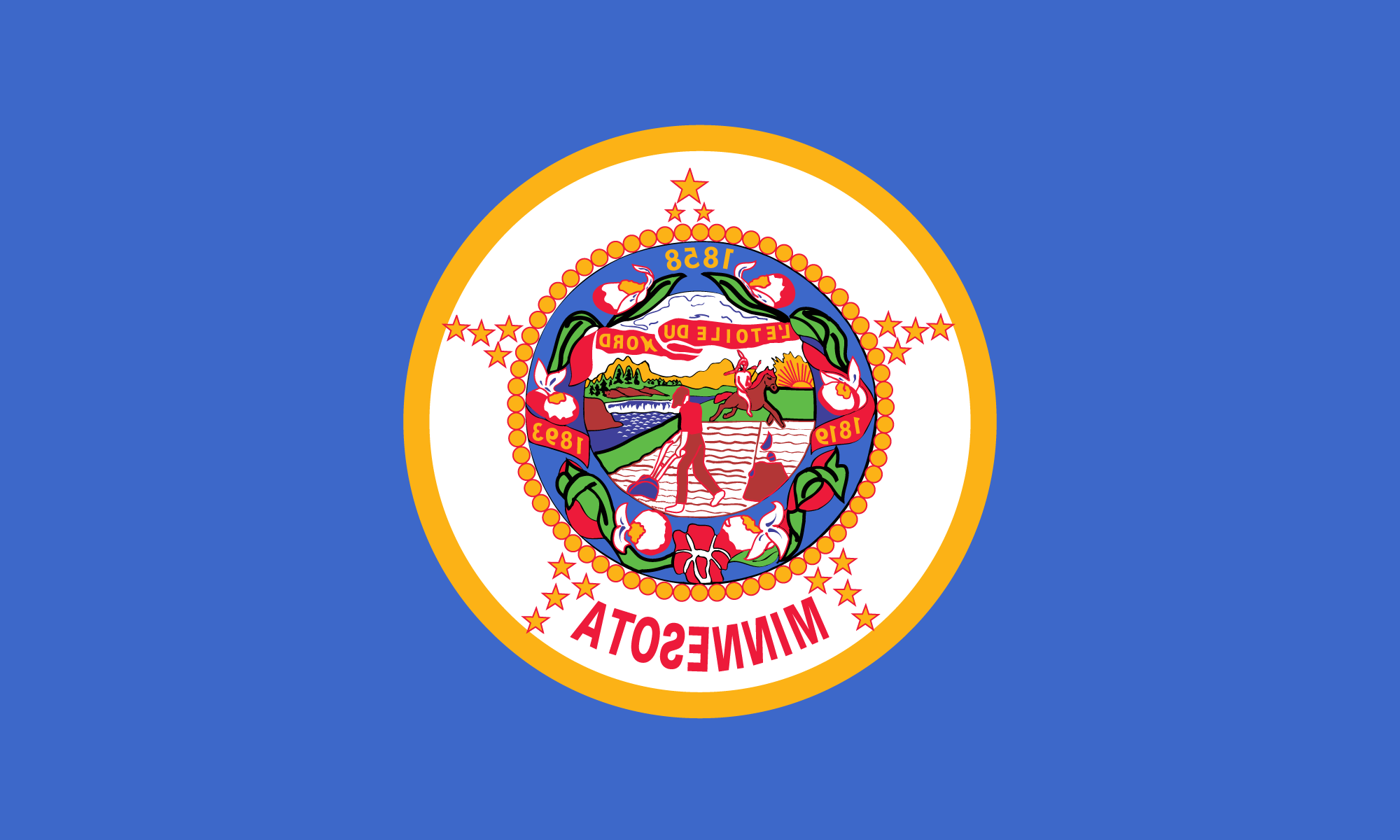1849-1858:

The first of Minnesota’s official seals was created in 1849 when Minnesota was still a territory. It symbolized the philosophy of manifest destiny, i.e., the white man taking over the frontier and pushing the Indians westward. There was one obvious problem: The Indian — who was supposed to be heading westward into the sunset — appeared to be heading eastward into the sunrise, because the seal was engraved in reverse. The territorial seal was based on a watercolor by Captain Seth Eastman, an astute artistic observer of frontier life.

“While young farming families unloaded their baggage from the steamboats, policy-makers in St. Paul were busy authorizing and designing a seal that would signify the territory’s potential. In 1849 Territorial Governor Alexander Ramsey and congressional delegate Henry Sibley supervised the selection of the design. After considerable thought they agreed that the best drawing [at left] was offered by Seth Eastman, an Army captain stationed at Fort Snelling whose illustrations of contemporary Indian life were well regarded. What Eastman’s pen work communicated was that the white man’s civilization was pressing the Indian into obscurity. Against a distant background of Minnehaha Falls, an Indian brave on a horse is seen turning away from a settler who has cut into the soil with his plow and into a tree with his ax. Eastman’s drawing, later incorporated into the state’s seal, forecast the heavy price the Sioux and Chippewa nations would pay throughout the nineteenth century. Mary Henderson Eastman, the artist’s wife, wrote a poem reflecting her husband’s work. Her words are poignant, not because she crafted her thoughts well but because they represent the zealousness of the new arrivals that doomed the proud Indian nations.
“Give way, give way, young warrior,
Thou and thy steed give way;
Rest not, though lingers on the hills
The red sun’s parting ray.
The rock bluff and prairie land
The white man claims them now,
The symbols of his course are here,
The rifle, axe, and plough.”(Image & text from D. Gelbach, From This Land, 29-31)
1858-1881:
Upon statehood in 1858, Governor Henry Sibley modified the territorial seal by reversing its image so that the Indian would be riding westward as originally planned. He also changed the previous Latin motto to “L’etoile du nord” (“The North Star”), representing the call of the northern frontier to the human spirit of exploration. He apparently rendered the motto in French as a tribute to the pioneering spirit of the voyageurs. His state seal was officially adopted by the legislature in 1861.
1881-1960’s:

After damage from a fire at the capitol, the state seal was re-cast in 1881.
1960’s-1983:

Because of complaints about the seal’s portrayal of the white man’s takeover of the frontier from the Indian (see column at right), a new version of the seal often appeared during the civil rights era of the 1960’s. Although it had no legal standing, the Indian was replaced by a “white rider.” This seal was apparently promoted and employed by the office of the Secretary of State, but was never used on the state flag.
1983-present:

In 1983, the legislature modernized and standardized the design of the seal. To respond to objections to previous designs (see column at right), the Indian rider is now portrayed as trotting southward while facing the white man, rather than fleeing westward from the advance of the white man. The design was drafted by Jacki Bradham, a state employee.
Sources:
- Jeffrey A. Hess. “Minnesota Almanac.” Roots 13:1 (Fall 1984). St. Paul: Minnesota Historical Society. 21-23.
- “Minnesota’s New State Seal.” Minneapolis Star-Tribune. Nov. 11, 1983.
- Nancy Eubank, “The Dakota.” Roots 12:2 (Winter 1984). St. Paul: Minnesota Historical Society. 4.
- Deborah L. Gelbach. From This Land. Northridge, CA: Windsor, 1988. 29-31. (Photo of Eastman’s watercolor: 31)
- Robert M. Brown. “The Great Seal of the State of Minnesota.“Minnesota History 33 (1952): 126-129.
- William W. Folwell. History of Minnesota. 1:459-462; 2:25-26, 357-361. St. Paul, 1924.
